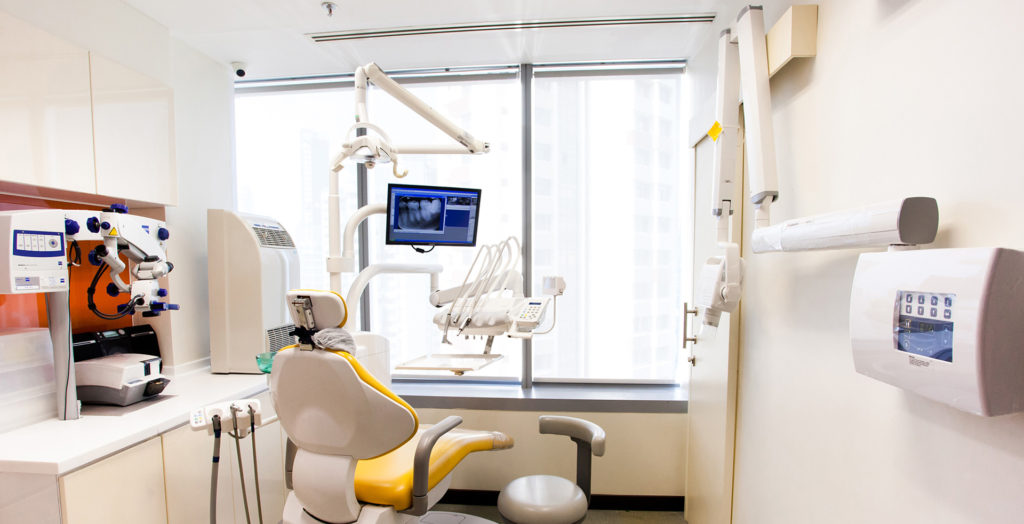I am having pain from my tooth – what should I do?
Clinical Signs and Symptoms of a Toothache
A toothache is oftentimes an excruciating experience that may affect your quality of life and daily function. It may be difficult for you to chew properly, get through the day or even sleep at night when there is untriggered, throbbing pain. When this occurs, it is important to see your dentist for immediate attention.
Possible Causes of Tooth Pain and What You Can Do
Below is a list of common pain symptoms, possible causes and some steps you can take to temporarily alleviate any discomfort prior to your dental visit.
- Momentary sensitivity to hot or cold foods
Possible cause: When the underlying dentine of the tooth is exposed due to enamel wear or initial decay, you may be experiencing dentine hypersensitivity. It is sharp and brief in nature and is triggered by temperature changes in foods or brushing and flossing. It does not linger once the stimulus is removed and does not occur spontaneously.What to do: You can try to apply a desensitizing toothpaste with a soft-bristled toothbrush in the sensitive areas. You may also wish to seek a consultation with your dentist to check for any possible tooth decay or loose fillings.
- Sensitivity to hot or cold after a dental filling
Possible cause: After a recent dental filling, there may be heightened sensitivity of the pulp. This is what dentists diagnose as reversible pulpal inflammation. The symptoms are characterized by a short and sharp sensitivity when triggered by temperature changes in foods and do not linger.What to do: Monitor the sensitivity for two to four weeks. If the sensitivity worsens in intensity or has evolved into a dull and lingering ache, see your dentist or an endodontist for a consult.
- Sharp pain or dull ache when biting
Possible cause: Sharp pain on biting on foods may be due to decay, loose filling or crack. A dull pain on biting may also signal periapical infection due to pulp necrosis of the tooth.What to do: Seek evaluation by a dentist, who may refer you to an endodontist to determine if there is any pulp disease which will necessitate root canal treatment. If it is just a decay or loose filling, it can be treated with a dental filling. If it is a deep decay or a crack, the tooth may need a root canal treatment.
- Lingering, throbbing pain (more than 20 seconds) after eating hot or cold foods and spontaneous pain at night
Possible cause: Lingering ache after a thermal stimulus or unprovoked pain at night (when lying down) may signal irreversible damage of the pulp caused by deep decay, crack or even severe gum disease.What to do: See your dentist or an endodontist as soon as possible to identify the problem tooth. They can remove the inflamed pulpal tissues and retain the tooth with root canal treatment. You may take over-the-counter painkillers in the meantime to break the pain cycle for temporary relief.
- Swelling or pus around gums
Possible cause: There may be a dental abscess caused by the surrounding periodontal tissues of the tooth. This may be due to a root canal infection or periodontal (gum) disease. It is not common, but the swelling can progress to the cheeks and the jaw.What to do: Seek a clinical evaluation with your dentist to diagnose the source of the infection. If the abscess is caused by a root canal infection, your endodontist may perform root canal treatment. If the swelling is due to periodontal disease, your dentist will carry out a deep cleaning around the gum region.
Above are the common situations when toothache occurs. There are instances where the patient perceives the pain as toothache, but it is actually caused by structures other than the teeth or the gums. To name a few: Sinusitis, Temporomandibular Disorder (jaw-joint issue) and Myalgia (pain involving the muscles).

Proper Examination and Correct Diagnosis
To treat the toothache, the dentist or the endodontist have to first arrive at the correct diagnosis.
The diagnosis of a toothache will require a proper understanding of the patient’s pain and careful examination of the tooth. During the examination, the dentist or endodontist will have to conduct a few tests to find out the triggering factors and attempt to reproduce the pain. In addition, they will take radiograph/s to assess the extent of disease and the health of the surrounding structures.
To understand Root Canal Treatment Procedures, you can refer to our other Blog articles.
